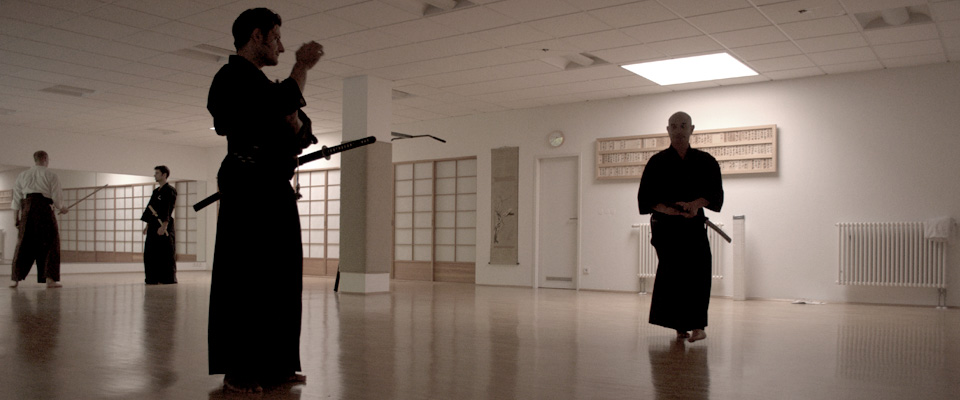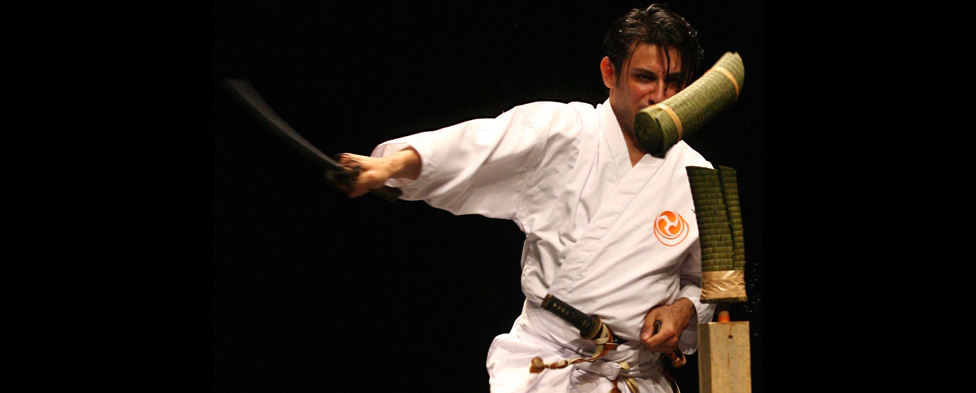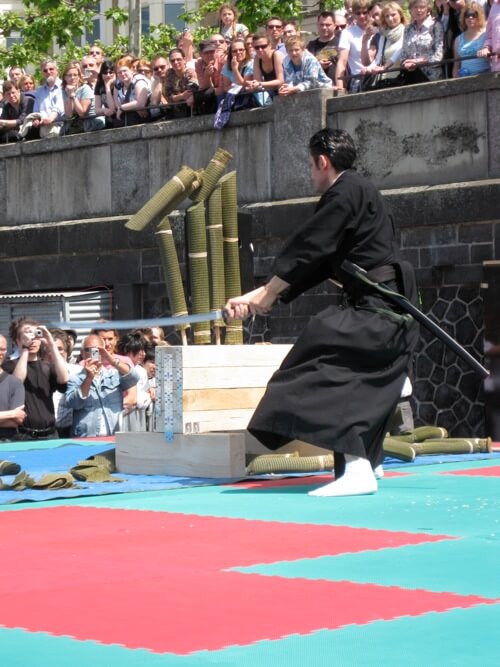Tameshigiri
Cutting-test with a real katana
Tameshigiri is testcutting. In medieval Japan new swords were tested by samurai on the corpses of executed or convicted but living criminals or enemies. The modern meaning of tameshigiri as a means of training can be compared to a breaktest in the weaponless fighting arts.
To this effect specially rolled Igusa-grass mats, so called tatami omote, or bamboo branches are employed. Before cutting the tatami omote are soaked in water for several hours to imitate a human body and also to protect the katana. The tatami omote are the placed vertically on a rack.
In tameshigiri training diverse cuts are made, either single or in a row, in order to test the practicability of the technic or to improve one’s ability. The cuts are mostly basic. Cutting in a row can be a kata previously learned.
For correct cutting it is necessary to hold the angle of the blade in exactly the same line as the trajectory line of the cut otherwise the sword may get stuck or it may even result in a broken blade.
Tameshigiri makes you understand that a cut with a katana does not need much muscular strength but a seasoned technic and speed.
As tameshigiri is a potential danger for the trainees and for the spectators an experienced teacher and precautions are necessary.
You can watch more Tameshigiri videos in our YouTube Channel.




